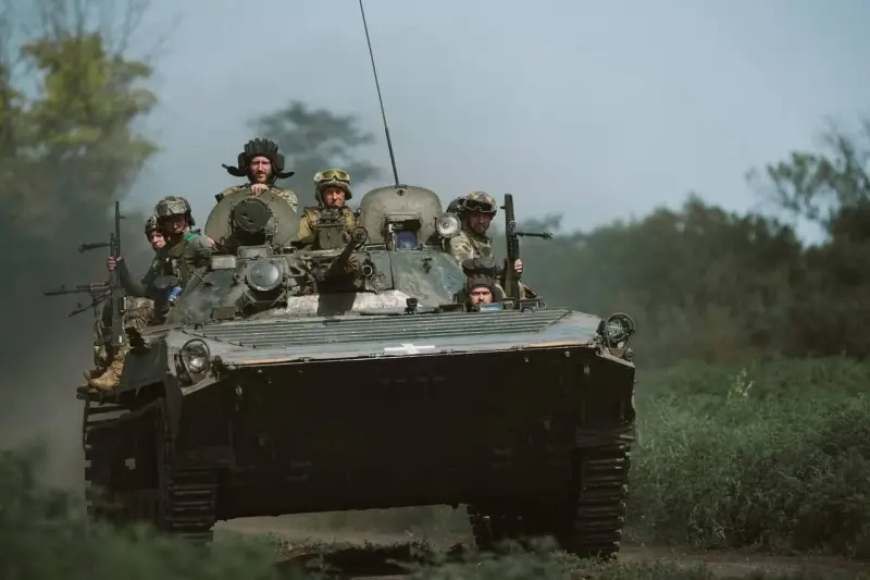Russia's DefenseTech: A Deep Dive into Innovation and Military Power

Russia has long been recognized as a formidable military power, wielding a combination of strategic artillery, nuclear capabilities, and advanced technological developments. Over the past decade, the country has embarked on an ambitious mission to revolutionize its defense industry through the development of cutting-edge technologies, collectively known as DefenseTech. This initiative aims to modernize the nation's armed forces, enhance tactical operations, and restore Russia’s position at the forefront of military innovation.
The Origins of Russia's DefenseTech
In the wake of geopolitical shifts and evolving threats, the Russian government unveiled its DefenseTech strategy in 2015. This comprehensive program aimed to integrate robotics, artificial intelligence (AI), hypersonic weapons, cyber capabilities, and next-generation armored vehicles into Russia's military framework. Central to this vision was the belief that technological superiority is crucial in modern warfare, where traditional tactics are rapidly becoming obsolete.
The DefenseTech program was also a response to NATO's expansion and the increasing sophistication of regional adversaries. By investing heavily in indigenous research and development, Russia sought to ensure strategic autonomy and reduce reliance on external suppliers.
Key Areas of Russian Defense Innovation
1. Hypersonic Weapons
One of the most highlighted achievements of Russian DefenseTech is the deployment of hypersonic missiles such as the Avangard and Kinzhal. Capable of traveling at speeds exceeding Mach 5, these weapons defy current missile defense systems, providing Russia with a significant strategic edge. The Avangard, in particular, is a glide vehicle mounted on intercontinental ballistic missiles, capable of evading most missile defenses.
Defense analysts believe these weapons are central to Russia's doctrine of deterrence. They enable the country to threaten preemptive strikes and ensure strategic stability through military escalation deterrence.
2. Autonomous and Robotics Systems
Automation and robotics have seen rapid advancements under DefenseTech. Russia has developed a new generation of unmanned ground vehicles (UGVs) and drones designed for reconnaissance, target acquisition, and even combat engagement. The Marker drone system, for example, can operate both independently and in coordination with manned units.
Furthermore, the Sarmat heavy-lift drone carries payloads that can be used for electronic warfare, surveillance, or even delivering small-scale munitions. Ground robots like the Uran-9 combat robot are also being integrated into troops to perform dangerous tasks, reducing personnel casualties.
3. Cyber Warfare and Electronic Warfare (EW)
Cyber operations are now a core element of the Russian DefenseTech arsenal. Russian cyber units, such as the Main Directorate of the General Staff's cyber forces, conduct sophisticated offensive and defensive operations targeting adversary infrastructure, communications, and command systems.
Electronic warfare systems, including the Krasukha series and Rychag radar jamming platforms, disrupt enemy radar and satellite communications, providing a battlefield advantage. These capabilities are particularly vital in modern hybrid conflict scenarios.
4. Next-Generation Armored Vehicles
Russia has introduced the T-14 Armata main battle tank—a product of its DefenseTech advancements—to replace older versions. The T-14 boasts advanced armor, an unmanned turret, and integrated active protection systems that can intercept incoming projectiles.
Similarly, the Sotka armored personnel carrier and various robotic combat modules are being developed to operate in complex terrain and urban environments, ensuring mobility and survivability.
Strategic Impact and Global Standings
Russia’s investment into DefenseTech has altered the global military landscape. The country’s focus on hypersonic weapons and electronic warfare has challenged U.S. and NATO supremacy, forcing allied nations to accelerate their own technological programs.
The deployment of these new systems has also played a pivotal role in ongoing regional conflicts, including the situation in Ukraine, Syria, and the Arctic. Russia articulates that DefenseTech bolsters national security but also serves as a demonstration of technological prowess on the world stage.
Challenges and Criticisms
Despite impressive advancements, Russia's DefenseTech initiatives face multiple challenges. Funding constraints, bureaucratic hurdles, and technological bottlenecks have slowed some projects. Critics argue that Russia's rapid development in certain areas may come at the expense of operational readiness and logistical support.
Additionally, some Western analysts project that certain claims about weapon capabilities—such as the hypersonic missiles—may be overly optimistic or exaggerated for strategic signaling rather than current combat effectiveness.
Future Directions
Looking ahead, Russia’s DefenseTech roadmap emphasizes integration. The focus is shifting toward creating a seamless network of sensors, drones, cyber systems, and autonomous units that can operate in a coordinated manner. This “buttoned-up” approach aims to exploit the latency and vulnerability gaps of adversaries' systems in future conflicts.
Furthermore, Russia is investing in space-based military assets, such as advanced satellites and anti-satellite systems, to enhance situational awareness and deter space-based threats.
Conclusion
Russia's DefenseTech initiative embodies the country’s strategic pursuit of technological dominance in military affairs. From hypersonic missiles to autonomous robots and cyber capabilities, Russia aims to reshape modern warfare's landscape and assert its influence globally.
While there are significant hurdles to overcome, the progress made over the past decade underscores Russia’s commitment to maintaining a formidable and innovative military force. As tensions persist worldwide, the evolution of Russia’s DefenseTech will undoubtedly continue to be a focal point for military strategists, policymakers, and global security observers alike.

 Francis
Francis 





